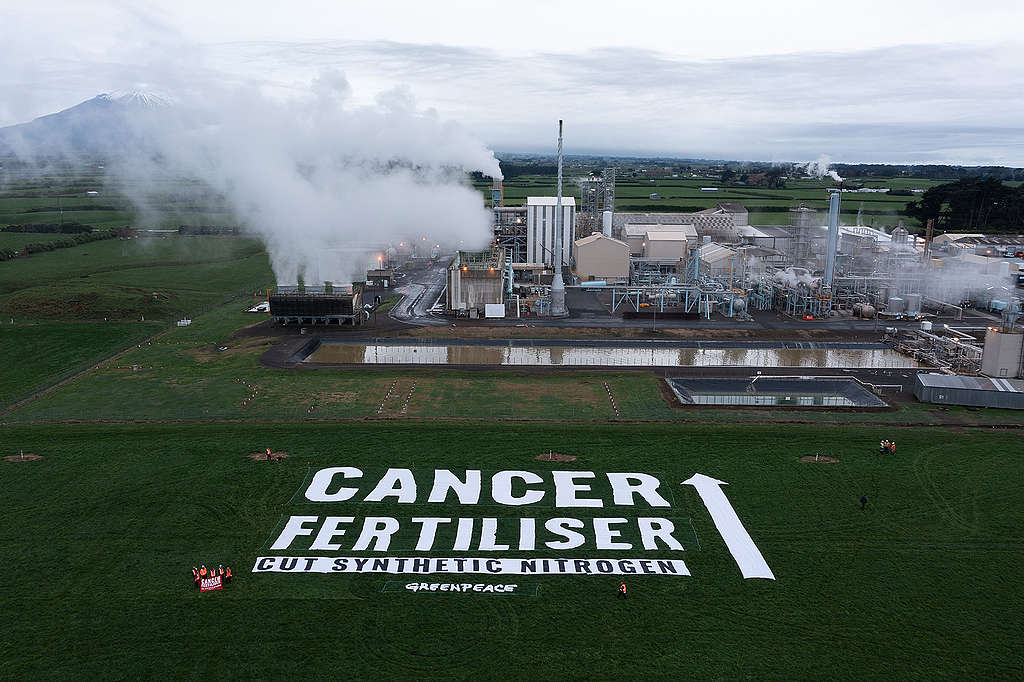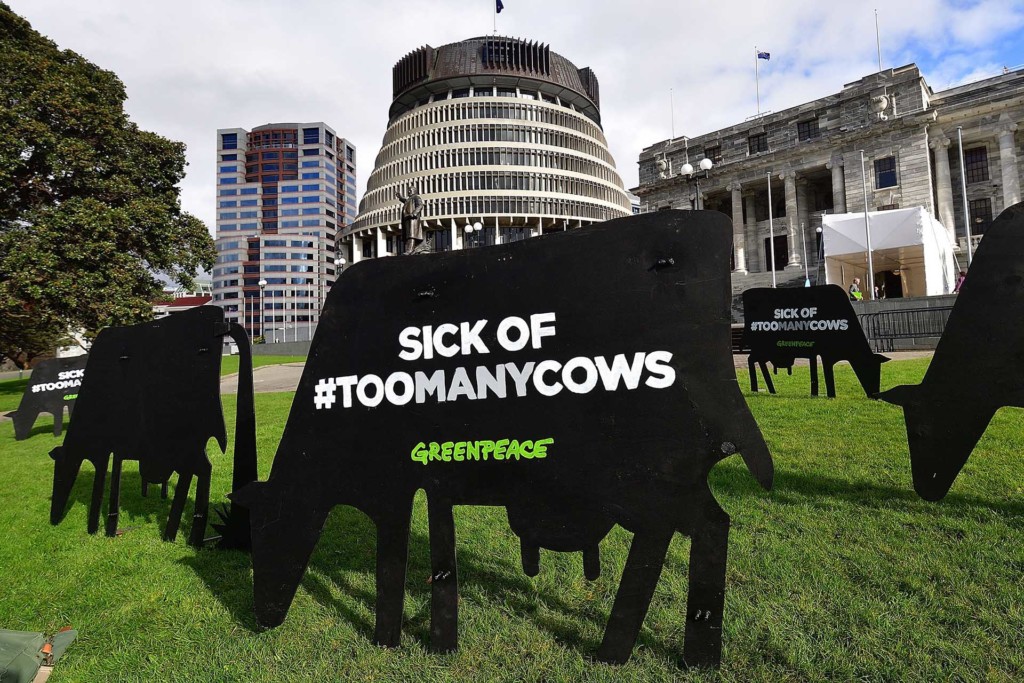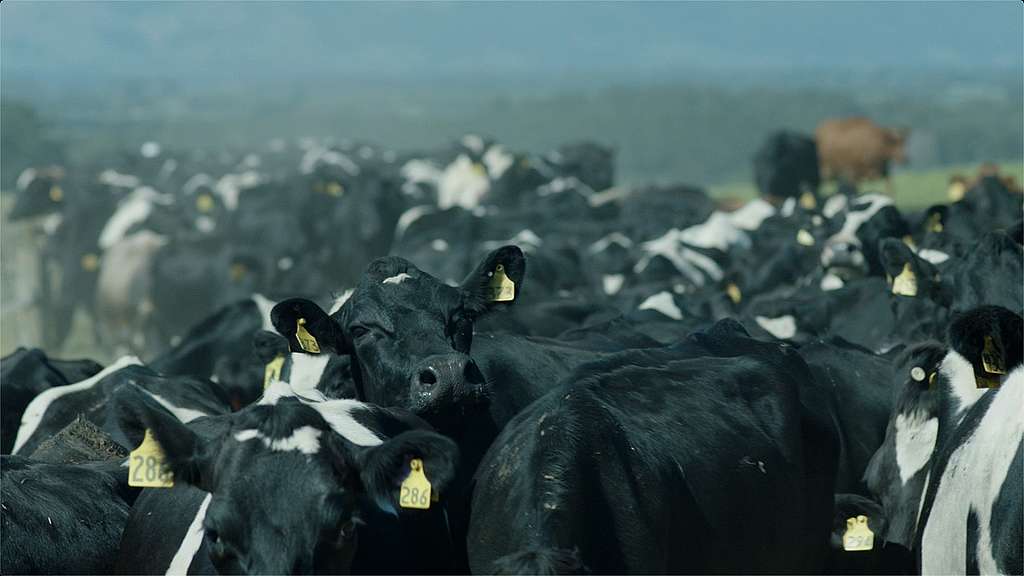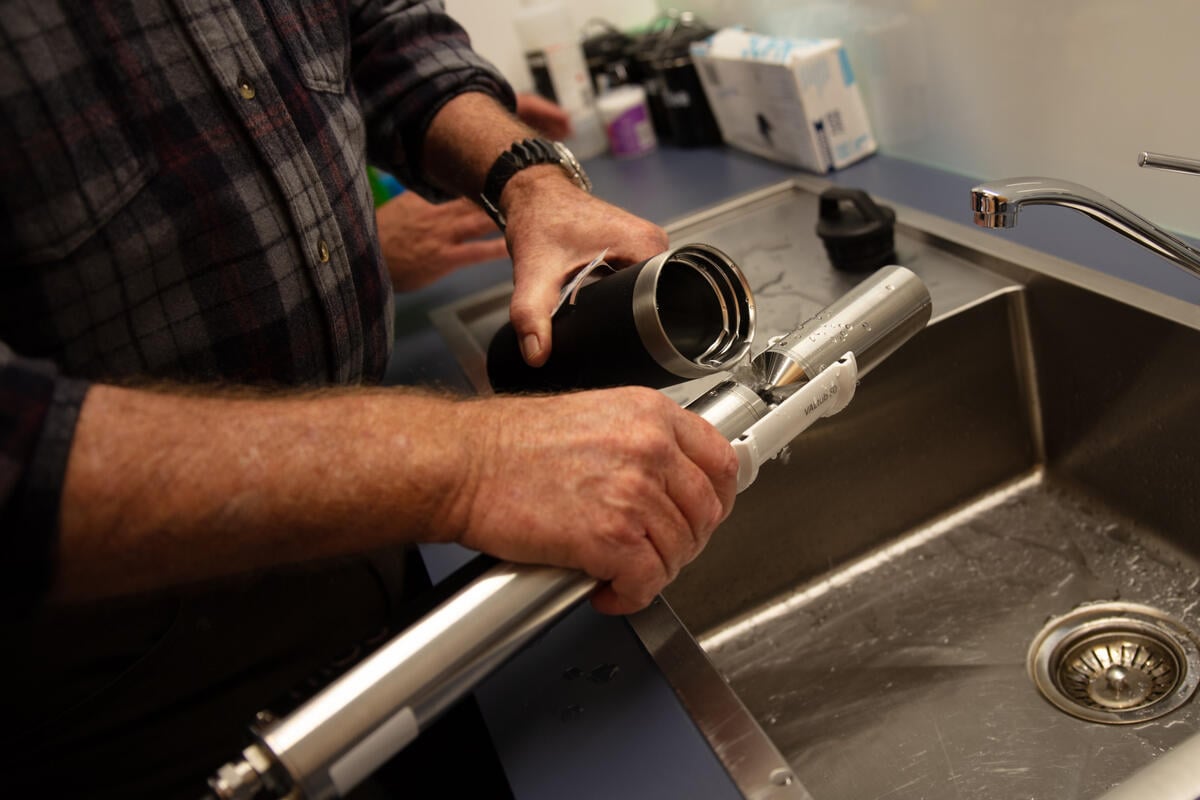Everyone should be able to trust that the water from their tap is safe to drink. That’s why the rising nitrate contamination in drinking water supplies across New Zealand is concerning – largely thanks to intensive dairying and synthetic nitrogen fertiliser.
But… what is nitrate contamination? Where does it come from? And what can we do about it?

What is nitrate contamination?
Nitrate is a chemical formed from nitrogen and oxygen. It’s found in soil, and helps plants grow by providing nitrogen.
Some plants, such as clover, get nitrogen from the air and ‘fix’ it into the soil with the help of microorganisms, where it can be used by other plants such as grass.
But when industries like intensive dairying try to keep more cows than the land can sustain, they turn to supplying plants with a manufactured form of nitrogen – synthetic nitrogen fertiliser.
Too much nitrate in the soil can seep into groundwater and then into our rivers and drinking water.
Where does nitrate contamination come from?
Nitrate levels in freshwater and groundwater have increased as dairying has intensified due to application of synthetic nitrogen fertiliser and urine from cows.
Synthetic nitrogen fertiliser and intensive dairying are now the largest causes of increased nitrate contamination in our water.
The areas with the highest rates of nitrate contamination of drinking water are also those with high rates of synthetic nitrogen fertiliser use and intensive dairying, such as Canterbury, Waikato and Southland.
Nitrate contamination in drinking water is colourless, odourless and tasteless and is linked to health risks like blue baby syndrome, and now bowel cancer and premature births.

What are the health effects of nitrate contamination?
For many years, we have known that high concentrations of nitrate in drinking water used for mixing infant formula is linked to blue baby syndrome – where the nitrate deprives the baby of oxygen.
New research is emerging which shows that nitrate contamination in drinking water is linked to increased risk of bowel cancer, and strongly linked to a higher risk of premature birth.
How much is too much nitrate contamination?
In New Zealand, our drinking water standards say that the maximum amount of nitrate contamination allowed in our drinking water is 11.3mg per litre. This is based on the World Health Organisation limit necessary to avoid blue baby syndrome.
But there’s growing evidence that other health impacts occur with nitrate in water at much lower levels.
International studies have shown a link to increased bowel cancer risk at only 0.87mg/L of nitrate in drinking water. That’s one-thirteenth of New Zealand’s current limit of 11.3mg/L.
And a new study found that at just 5mg/L, nitrate contamination in drinking water can increase the risk of a premature birth by half.
What can we do about nitrate contamination?
Access to safe drinking water is a basic human right. Government and councils must take responsibility for making sure our drinking water is safe by stopping nitrate contamination at its source.
This means phasing out synthetic nitrogen fertiliser and halving the bloated dairy herd.
We’d also love to see the Government supporting farmers to make the shift to regenerative organic farming that looks after our water, so we can all live in a country where rivers run clear and our tap water is safe to drink.
What if I’ve had a water test done, and it shows my drinking water is high in nitrate?
We believe polluters should be held to account for the damage they do. It’s the job of regulators, like local and central governments, to stop polluters and protect people’s water from nitrate contamination.
If your water has tested high in nitrate, we recommend calling your local council to ask for advice and to tell them you want them to cut nitrate pollution at its source.
Short-term options if you’re worried about your water may include reverse osmosis, drilling a deeper bore well or connecting to the town water supply.
While nitrate can be removed from water using treatment processes such as ion exchange, distillation, and reverse osmosis, these can be expensive. Boiling your water, mechanical filters, or chemical disinfection, such as chlorination, unfortunately do not remove nitrate from water.
What do I do if I am concerned for my health?
It’s understandable to feel worried about possible health impacts. If you are concerned for your health or the health of family members you can speak to healthcare professionals by calling Healthline on 0800 611 116.
If you are concerned for your mental wellbeing you can access further support and free phone counselling via Lifeline, on: 0800 543 354.

Sign on now to call on the New Zealand Govt to ban chemical nitrogen fertiliser.
Take Action



